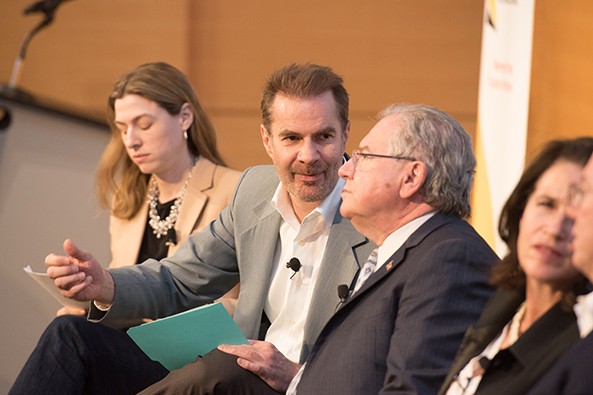
By Brian Eastwood, MIT Sloan
Bridging the nation’s growing economic divide will require partnerships among businesses, governments, and colleges and universities, as well as investments in programs as diverse as early education, job training, family leave, and infrastructure.
It’s a tall order, but such work is critical to addressing labor shortages, skills gaps, and a lack of diversity in the science and technology fields, according to a group of experts who spoke May 3 at a panel hosted by the Inclusive Innovation Challenge within the MIT Initiative on the Digital Economy.
“The talent shortage drives everything,” said Eric Schmidt, executive chairman of Alphabet Inc., Google’s parent company. During the event, Schmidt announced that Google.org — Google’s charity organization — is donating $500,000 to the Inclusive Innovation Challenge, which gives awards to organizations that use technology to create economic opportunities and redefine the future of work.
“Too often, we hear it’s a world without work, but it’s a dangerous and misleading meme, because there are tremendous opportunities to create work,” said MIT Sloan Professor Erik Brynjolfsson, director of the Initiative on the Digital Economy (pictured above). The challenge is finding the right people for the right jobs — even so-called “middle-skilled” positions that require data input and processing knowledge.
Address soft skills One solution, Brynjolfsson said, is teaching the underlying cause and effect of economic and business case studies. The particular use case may not be relevant in five years, he added, but the principles behind it will be.
This approach emphasizes critical thinking as opposed to rote memorization, and it helps address the need for soft skills that are necessary to succeed in today’s workforce — problem solving, creativity, collaboration, and analysis.
The process must begin early, Brynjolfsson said. Education gaps can appear as young as age 5 and only increase as children grow up, depending on where they live and go to school.
“Most employers say people are hired for skills and fired for attitude and behavior. It starts in preschool, learning how to play well with others,” said Shawn Bohen, national director for growth and impact at Year Up. The program pairs young adults from low-income neighborhoods with employer partners for one year of on-the-job training as well as education, which help companies find “untapped talent” among those with life experience but less exposure to traditional education, Bohen said.
Continue reading the full blog on Medium, here.
This blog first appeared on MIT Sloan School’s site here.
